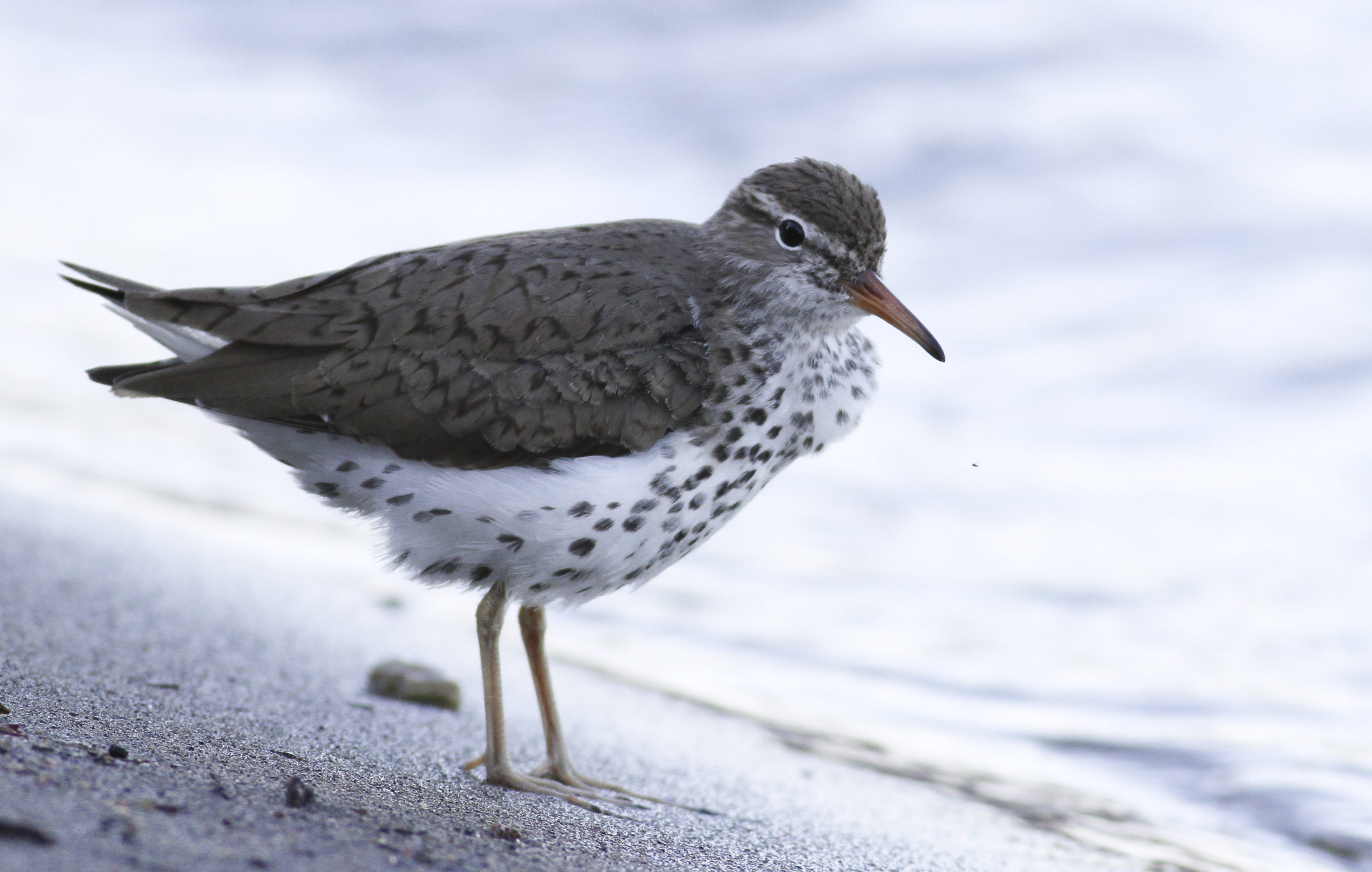Creative Dancing on the Shore


By Wayne Bierbaum
Last week, I was taking a chilly and foggy walk through Thomas Point Park in Annapolis. As I was standing at the edge of the Bay a cluster of five birds flew straight at me. They were about the size of doves and flew fast, skimming just above the tops of waves. With pointy wings and pointy long bills, I recognized them as being a type of sandpiper.
I was hoping that they were a species that I haven’t seen before, like a curlew sandpiper. The five travelers landed near me and as I watched them feed along the rocks, it was quickly obvious that they were spotted sandpipers. While not new to me, they are still fun to watch.
Spotted sandpipers are the type of birds that walk with a little dance step. They tilt their body like a seesaw in time with each step and frequently do the tilting even when simply standing. They also lean forward when they walk, looking awkward or even silly as they move along the rocky or sandy shores.
As a kid, I always thought that sandpipers were exclusively found along the coastal shores. However, there are several types of sandpipers, including the spotted sandpiper, commonly found away from coasts. I have had more encounters with spotted sandpipers around lakes and rivers than at the seashore. I found some on the shore of Lake George in New York, many were present along the Mississippi River in Illinois, and I saw some hopping on rocks in Boulder Creek in Colorado. They feed on the bugs and crustaceans that collect along the water’s edge. Because of their ability to adapt to many habitats, they are the most common sandpiper in North America.
The spotted sandpiper is different from other sandpipers in that they nest along the shores of freshwater lakes and streams and not the Arctic tundra. The nests have three to five eggs; when the young hatch, they immediately start catching bugs on their own and leave the nest. In the fall they will migrate to Central America or the southern Gulf Coast. In the winter, the sandpipers lose their spots. As they return to their spring breeding areas, the spots return.
If you see a bird walking at the edge of fresh water and it has a bouncing tilting gait then it is likely a spotted sandpiper. Check out some YouTube videos to watch them in action—even the babies do the bouncing tilt walk.
The only bird that has a stranger walk is the timberdoodle.
